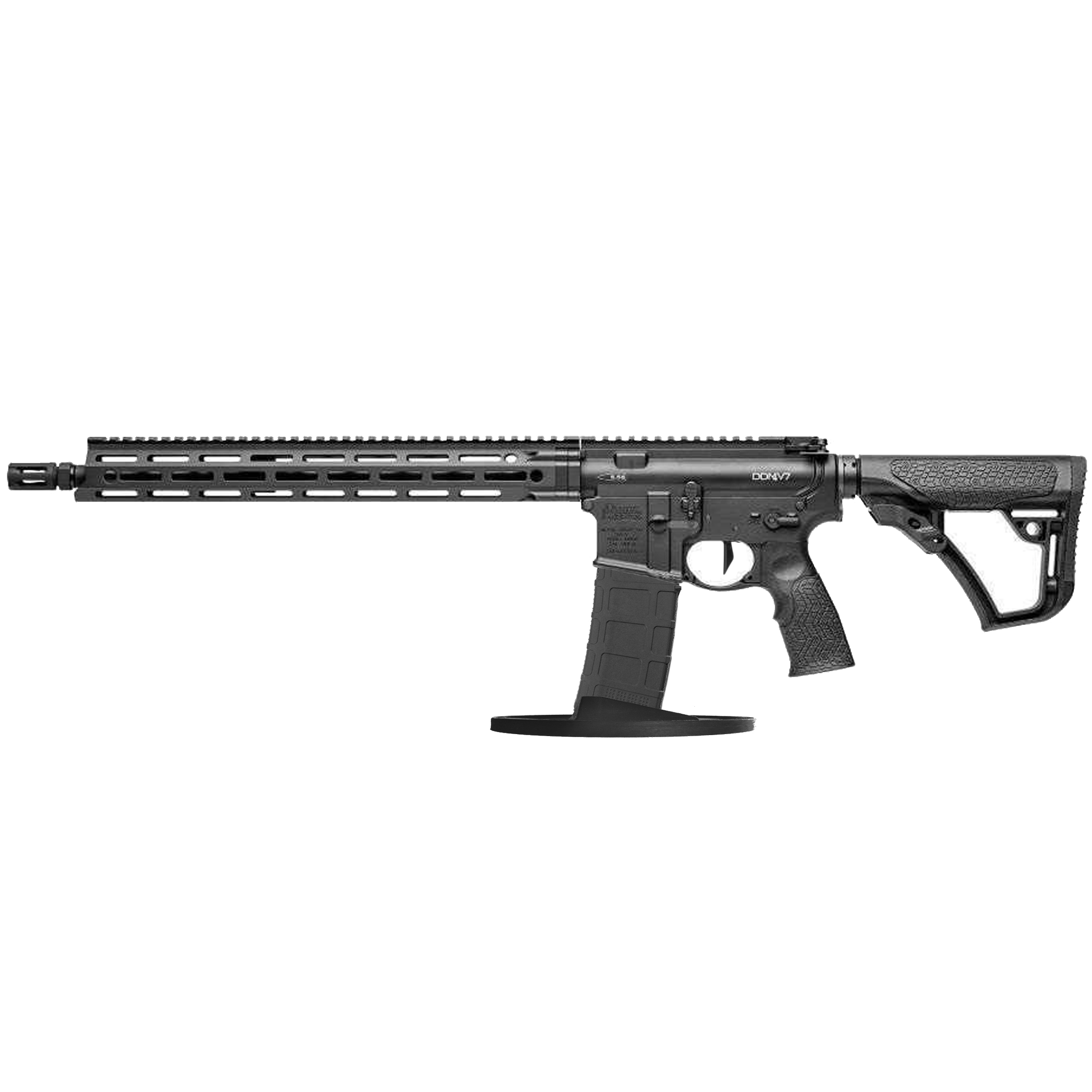
Categories:
Gun magazines are a crucial component of guns, responsible for holding and feeding ammunition into the chamber. Over the years, advancements in technology have led to the development of various materials for manufacturing gun magazines. Two prominent options that have gained widespread popularity are metal and polymer.
Metal gun magazines, traditionally made from steel or aluminum alloys, have been a staple in the gun industry for decades. Renowned for their durability and reliability, metal magazines offer a robust construction that can withstand harsh conditions and heavy usage. The rigidity of metal allows for precise feeding of ammunition without flexing or warping under pressure. Moreover, metal magazines often have higher round counts compared to their polymer counterparts due to their ability to accommodate thinner walls while maintaining structural integrity.
On the other hand, polymer gun magazines have emerged as a viable alternative in recent years. Constructed from high-density polymers such as nylon or fiberglass-reinforced plastic, these lightweight magazines offer several advantages over their metal counterparts. One significant benefit is their resistance to corrosion; unlike metals prone to rusting when exposed to moisture or humidity, polymer materials remain unaffected by such conditions.
Additionally, polymeric materials possess inherent lubricity that aids in smooth ammunition feeding.
Weight reduction is another advantage offered by polymer magazines that cannot be overlooked. Guns equipped with polymer magazines experience reduced overall weight, making them more comfortable to handle during extended use or when carrying multiple loaded magazines on one’s person.
Furthermore, manufacturers can mold polymer into complex shapes with relative ease compared to working with metals. This flexibility grants designers greater freedom in developing innovative magazine designs that enhance functionality and ergonomics.
In this article, we will explore the characteristics of both metal and polymer gun magazine materials in greater detail – examining their respective strengths and weaknesses – ultimately assisting gun enthusiasts in making informed decisions based on individual needs and preferences when it comes to selecting an ideal magazine material for their guns.
Metal gun magazines have long been a popular choice among gun enthusiasts for their durability, reliability, and overall performance. While polymer magazines have gained traction in recent years due to their lightweight nature, metal magazines still hold several distinct advantages that make them a preferred option for many shooters. Let’s explore some of the key benefits offered by metal gun magazines.
1. Enhanced Durability: Metal magazines are known for their exceptional strength and resistance to wear and tear. Constructed from materials such as steel or aluminum alloys, these magazines can withstand rough handling, drops, and impacts without compromising their functionality. This durability ensures they can endure rigorous training sessions or demanding shooting environments without failure.
2. Longevity: Due to their robust construction, metal gun magazines often have a longer lifespan compared to polymer counterparts. The sturdy materials used in metal magazine production make them less prone to cracking or breaking over time. As a result, guns owners can rely on metal magazines for extended periods before needing replacements.
3. Reliable Feeding: One of the critical functions of any magazine is its ability to feed ammunition reliably into the gun’s chamber. Metal magazines excel in this area due to their consistent and smooth feeding characteristics. The rigid structure of metal ensures that cartridges are aligned properly during loading, reducing the likelihood of jams or misfeeds that may occur with more flexible polymer options.
4. Heat Resistance: Another advantage of metal gun magazines is their superior resistance to high temperatures generated during prolonged firing sessions or rapid-fire situations. Polymer materials tend to be more prone to heat-induced malfunctions such as warping or deformation when exposed to sustained heat levels that can occur during intense shooting scenarios.
In conclusion, while polymer gun magazines certainly offer certain advantages like lighter weight and cost-effectiveness, metal gun magazines continue to shine when it comes to durability, longevity, reliable feeding mechanisms, and heat resistance capabilities – making them an excellent choice for shooters who prioritize performance and reliability.
While metal gun magazines have long been the traditional choice for guns enthusiasts, they do come with several disadvantages when compared to their polymer counterparts. These drawbacks can affect various aspects of performance, user experience, and overall reliability.
One significant disadvantage of metal gun magazines is their weight. Due to the material’s density, metal magazines tend to be heavier than polymer ones. This added weight can be particularly noticeable in extended shooting sessions or during periods of continuous movement, such as in military operations or competitive shooting matches. The extra weight may lead to increased fatigue and hinder maneuverability, affecting the shooter’s accuracy and overall performance.
Another drawback of metal magazines is their potential susceptibility to corrosion. Although many modern metal magazines are treated with protective coatings, they can still be susceptible to rust if these coatings wear off or are damaged. Exposure to moisture or harsh environmental conditions can accelerate corrosion and compromise the magazine’s functionality over time. On the other hand, polymer magazines are more resistant to corrosion and often require minimal maintenance in comparison.
Metal gun magazines may also present challenges when it comes to ammunition visibility. Unlike their translucent polymer counterparts that allow users to easily gauge how many rounds remain in the magazine at a glance, solid metal magazines offer no such visual cues. Shooters relying on quick ammo checks must physically remove the magazine from the gun or rely on counting shots fired which can be time-consuming and potentially distracting during critical situations.
Additionally, although less common nowadays due to technological advancements, some older designs of metal gun magazines may exhibit feeding issues if not properly maintained or if subjected to excessive wear and tear over time. Polymer magazines have made significant strides in terms of reliability by incorporating features like anti-tilt followers and improved feed lips that enhance smooth ammunition feeding.
In summary, while metal gun magazines have long been a staple in guns history due to their durability and classic appeal, they do come with inherent disadvantages compared to modern polymer alternatives. These drawbacks include increased weight, potential corrosion susceptibility, limited ammunition visibility, and possible feeding issues in older designs.
Polymer gun magazines, also known as plastic magazines, have gained significant popularity in recent years due to their numerous advantages over traditional metal magazines. These lightweight and durable accessories have revolutionized the guns industry, offering several key benefits that make them a preferred choice for many gun enthusiasts. Let us delve into the advantages of polymer gun magazines. 1. Weight: One of the primary advantages of polymer gun magazines is their lightweight nature.
Compared to metal counterparts, polymer magazines are significantly lighter, allowing shooters to carry more ammunition without adding excessive bulk or weight to their guns. This advantage is particularly crucial for military personnel and law enforcement officers who may need to carry extra ammunition for extended periods. 2. Corrosion Resistance: Polymer magazines are highly resistant to corrosion caused by moisture or harsh environmental conditions.
Unlike metal magazines, which can rust when exposed to moisture or corrosive substances, polymer variants remain unaffected by these factors. This corrosion resistance ensures the longevity and reliability of polymer gun magazines even in challenging environments such as humid climates or saltwater environments. 3. Cost-effective: Another notable advantage of polymer gun magazines is their affordability compared to metal alternatives. The manufacturing process for plastic components is generally less expensive than producing metal parts, resulting in cost savings that are often passed on to consumers.
This affordability makes polymer gun magazines an attractive option for shooters looking for reliable and cost-effective accessories without compromising on quality. 4. Enhanced Ergonomics: Polymer gun magazines are often designed with ergonomics in mind, offering improved grip textures and ergonomic shapes that enhance handling and reloading speed during high-stress situations. The smooth surfaces and rounded edges found on many polymer magazine designs contribute to smoother magazine changes while reducing the risk of snagging on clothing or gear.
5. Quieter Operation: Polymer magazine bodies tend to produce less noise when coming into contact with other objects compared to metal counterparts due to their softer material composition. This reduced noise can be advantageous in certain scenarios, such as hunting or tactical operations, where stealth and silence are crucial elements. In summary, polymer gun magazines offer several advantages over their metal counterparts.
While polymer gun magazines have gained popularity in recent years, they are not without their drawbacks. Although these magazines offer several advantages over their metal counterparts, it is important to consider the limitations and disadvantages they present. One significant disadvantage of polymer gun magazines is their potential for durability issues. While modern polymers are engineered to be strong and resilient, they may not possess the same level of durability as metal magazines.
Under certain conditions, such as extreme temperatures or exposure to harsh chemicals, polymer magazines can become brittle or warp. This can lead to feed malfunctions or even complete failure, compromising the reliability of the gun. Another concern with polymer magazines lies in their susceptibility to deformation. In high-stress situations or when dropped onto a hard surface, polymer magazines may deform or develop cracks.
This compromises their structural integrity and may render them unusable. Furthermore, the deformation can affect proper feeding and extraction of cartridges from the magazine, potentially causing misfires or jams. Additionally, some shooters argue that polymer gun magazines lack a tactile advantage over metal ones. Metal magazines often provide a more substantial feel and weight that some shooters find reassuring when handling guns.
The lightweight nature of polymer magazines may give an impression of flimsiness or reduce perceived control during shooting. Moreover, when it comes to aesthetics and customization options, polymer gun magazines tend to offer limited choices compared to metal versions. While metal magazine manufacturers often provide various finishes and designs for customization purposes, most polymer magazine options are relatively plain in appearance.
Lastly, there is an ongoing debate regarding long-term durability and longevity between metal and polymer gun magazines. While metal has proven itself over decades for its resistance against wear and tear under heavy use conditions, it remains uncertain if polymers can withstand similar levels of abuse without degradation over extended periods. In conclusion, while polymer gun magazines offer numerous advantages such as reduced weight and cost-effectiveness compared to their metal counterparts; they also come with certain disadvantages that must be considered.
When it comes to gun magazines, choosing the right material is crucial to ensure reliability and longevity. Two popular options in the market are metal and polymer magazines. Each material has its own set of advantages and disadvantages, making it important for gun enthusiasts to understand their characteristics before making a decision.
Metal gun magazines, often made from steel or aluminum, have long been favored for their durability. These magazines can withstand significant abuse without experiencing failures or malfunctions. Their solid construction allows them to handle rough handling, drops, and impacts with minimal damage. Metal magazines are also highly resistant to heat and cold temperatures, making them suitable for use in extreme environments.
In terms of lifespan, metal magazines tend to outlast their polymer counterparts. With proper care and maintenance, metal magazines can function reliably for many years without noticeable degradation in performance. The robustness of the metal construction ensures that these magazines can endure constant loading and unloading cycles without suffering from wear or fatigue.
On the other hand, polymer gun magazines have gained popularity due to their lightweight nature and cost-effectiveness. These magazines are typically made from high-strength polymers such as nylon or fiberglass-reinforced composites. Despite being lighter than their metal counterparts, polymer magazines still offer impressive durability.
Polymer gun magazines excel in resisting corrosion since they are not susceptible to rusting like metals can be over time. Additionally, these modern materials provide excellent resistance against chemicals commonly encountered during gun maintenance or cleaning routines.
Although polymer magazine lifespan might not match that of metal ones under extreme conditions or prolonged heavy usage, they still offer satisfactory longevity for most shooters’ needs when properly cared for.
In conclusion, when comparing durability and lifespan between metal and polymer gun magazines, both materials have distinct advantages worth considering based on individual preferences and requirements. While metal offers unparalleled ruggedness and extended service life under demanding conditions, polymer provides a lighter alternative with corrosion resistance and cost-effectiveness. Ultimately, the choice between the two comes down to personal preferences, usage patterns, and the specific demands of the gun platform.
When it comes to choosing between metal and polymer gun magazines, weight and portability are crucial factors to consider. The weight of your gun accessories can greatly impact your shooting experience, especially during prolonged periods of use or when carrying multiple magazines. Both metal and polymer magazines have their own advantages and disadvantages in terms of weight and portability.
Metal gun magazines are generally heavier compared to their polymer counterparts. This is primarily due to the material used, such as steel or aluminum alloys, which provide durability and strength but add significant weight. While this extra weight can enhance the overall balance of the gun, it may also contribute to fatigue during extended shooting sessions or when carrying multiple loaded magazines.
On the other hand, polymer gun magazines are made from lightweight synthetic materials like high-impact resistant polymers or reinforced nylon composites. This results in a considerable reduction in overall weight compared to metal magazines. The lighter construction makes polymer magazines more convenient for shooters who prioritize agility and ease of handling over other factors.
The reduced weight of polymer magazines offers several advantages for shooters in terms of portability. It allows for easier maneuverability, especially in dynamic shooting scenarios that involve quick target transitions or rapid magazine changes. Additionally, lighter gun accessories can be particularly beneficial for those engaging in activities that demand increased mobility, such as law enforcement officers on foot patrol or competitive shooters participating in multi-stage matches where speed is crucial.
However, it’s important to note that while polymer gun magazines excel in terms of weight reduction, they may not possess the same level of durability as metal alternatives. Metal magazine bodies tend to withstand harsher treatment without suffering from cracks or deformation that can potentially impair functionality.
Ultimately, the choice between metal and polymer gun magazines depends on individual preferences and specific usage requirements. Shooters who prioritize durability over weight might favor metal options despite their added heft. Conversely, those seeking enhanced portability and ease of use may find polymer magazines to be a more suitable choice.
When it comes to choosing between metal and polymer gun magazines, one crucial factor that gun enthusiasts often consider is the cost. The price of a magazine not only affects the initial purchase but also impacts long-term maintenance and durability. Therefore, a comprehensive cost analysis is essential to determine which type of magazine provides the best value for money. Metal gun magazines, typically made from steel or aluminum alloys, tend to be more expensive upfront compared to their polymer counterparts.
This higher cost can be attributed to the materials used in their construction as well as the manufacturing processes involved. However, metal magazines are known for their robustness and ability to withstand harsh conditions. They are less likely to crack or break under stress, making them a reliable choice for long-term use. On the other hand, polymer gun magazines are usually more affordable than metal ones.
The lower cost can be attributed to the relatively cheaper raw materials used in their production, such as high-grade polymers like reinforced nylon or fiberglass-reinforced polymers. While they may not match metal magazines in terms of sheer strength and durability, modern advancements have significantly improved their reliability and performance. In terms of maintenance costs, both metal and polymer magazines require regular cleaning and upkeep to ensure optimal functionality.
Metal magazines may require additional lubrication due to potential friction between moving parts. Polymer magazines generally have self-lubricating properties but might need occasional cleaning if dirt or debris accumulates in the feed lips or follower mechanisms. Ultimately, when considering the overall value for money regarding gun magazine selection, it is crucial to assess individual needs and preferences alongside budget constraints. While metal magazines offer exceptional durability at a higher price point upfront, they might be considered a worthwhile investment for those who prioritize longevity and ruggedness over initial expenditure.
On the other hand, polymer magazines provide an affordable option without compromising reliability if maintained properly. In conclusion, while there is an initial cost difference between metal and polymer gun magazines, the decision ultimately depends on one’s specific requirements and budget.
When it comes to selecting the appropriate magazine material for your gun, understanding the characteristics and advantages of both metal and polymer options is crucial. Each material offers distinct benefits that cater to different shooting preferences, environments, and requirements.
Metal magazines, such as those made from steel or aluminum alloys, have long been favored by many shooters due to their durability and reliability. These magazines are known for their ability to withstand harsh conditions and high-impact situations without compromising functionality. Metal magazines also excel in providing consistent feeding and long-term endurance. Additionally, they tend to have a higher capacity compared to polymer counterparts.
On the other hand, polymer magazines have gained popularity in recent years due to their lightweight construction and affordability. These magazines are typically made from reinforced polymers that offer excellent resistance against corrosion and rust. The lightweight nature of polymer magazines can be advantageous when carrying multiple spare magazines or during extended shooting sessions where reduced weight is desired.
However, it’s important to note that not all polymer magazines are created equal. High-quality polymer materials with reinforced feed lips can provide similar reliability as metal options while offering a lighter alternative. Nonetheless, extreme temperatures may impact the performance of some polymer magazines more than metal ones.
Ultimately, choosing between metal or polymer magazine materials should be based on an individual’s specific needs and preferences. Factors such as intended use (self-defense, competition shooting), environmental conditions (high humidity or extreme temperatures), desired weight reduction, budget constraints, and personal shooting style should all be carefully considered.
Regardless of which material you choose for your gun magazine, proper maintenance is essential for optimal performance and longevity. Regular cleaning, lubrication with appropriate products suitable for each material type will help ensure reliable function over time.
In conclusion, whether you opt for the ruggedness of metal or the lightweight versatility of polymers in your gun magazine selection depends on your specific requirements as a shooter. By weighing the advantages and considering your shooting preferences, you can make an informed decision that suits your needs best.
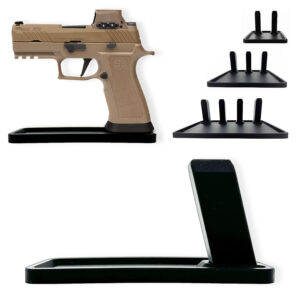

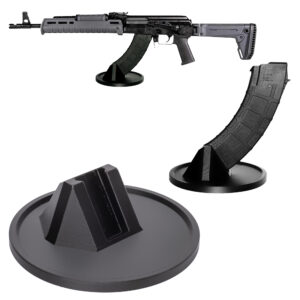

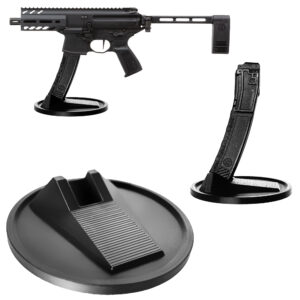
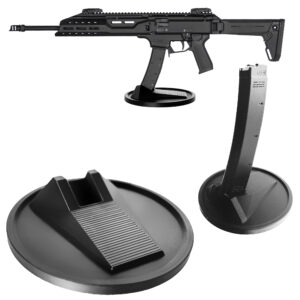

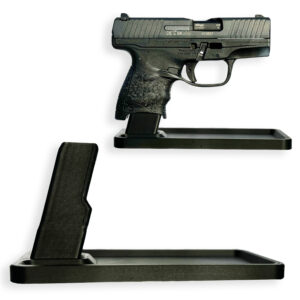
Colt
Colt M4 Carbine
Colt LE6920
Colt AR-15 A4
Daniel Defense
DDM4 V7
DDM4 V9
DDM4 V11
DDM4 ISR (Integrally Suppressed Rifle)
Smith & Wesson (S&W)
M&P15 Sport II
M&P15 Tactical
M&P15T
Bravo Company Manufacturing (BCM)
BCM Recce-16
BCM Recce-14
BCM MCMR Series
Aero Precision
M4E1 Series
AC-15
AR15 Pistol (Various Configurations)
Ruger
Ruger AR-556
Ruger SR-556
Ruger AR-556 MPR (Multi-Purpose Rifle)
Springfield Armory
Saint Victor
Saint Edge
Saint AR-15
PSA (Palmetto State Armory)
PSA PA-15
PSA AR-V
PSA Jakl (AR Pistol)
FN America
FN 15 Tactical Carbine
FN 15 Patrol
FN 15 DMR
Wilson Combat
Recon Tactical
Super Sniper
Protector Carbine
SIG Sauer
SIG M400 Tread
SIG M400 Elite
SIG M400 SDI
LWRC International
IC DI (Direct Impingement)
IC SPR
IC A5
Bushmaster Guns
XM-15 QRC
Bushmaster MOE
XM-15 Patrolman
Rock River Arms
LAR-15 Entry Tactical
LAR-15 Predator
LAR-15 Elite Comp
Stag Arms
Stag 15 Tactical
Stag 15L (Left-Handed Models)
Stag 15 Valkyrie
Noveske Rifleworks
Noveske Gen 4 N4
Noveske Space Invader (AR Pistol)
Noveske Recon
Anderson Manufacturing
AM-15 Optic Ready
AM-15 M4 Carbine
AM-15 Precision Rifle
Adams Arms
AA-15 Piston Rifle
P2 AARS (Adams Arms Rifle Series)
Black Rain Ordnance
SPEC15 Series
BRO Predator
Fallout 15
Diamondback Guns
DB15 Series
DB15CCMLB
DB15EB
Del-Ton Inc.
DTI-15
Del-Ton Echo 316H
Sierra 316M
Windham Weaponry
Windham SRC
Windham VEX-SS
Windham RMCS-4 (Caliber Conversion System)
Christensen Arms
CA-15 G2
CA-15 Recon
CA-15 Titanium Edition
Patriot Ordnance Factory (POF-USA)
Renegade Plus
P415 Edge
Revolution DI
LaRue Tactical
PredatAR
OBR (Optimized Battle Rifle)
LaRue Stealth 2.0
Battle Arms Development
Workhorse Patrol Carbine
BAD556-LW (Lightweight)
Authority Elite Rifle
Faxon Guns
Ascent AR-15
FX-19 (AR Pistol)
Streamline Ultralight Series
KE Arms
KE-15 SLT (Super Lightweight Tactical)
KE-15 Scout Carbine
Primary Weapons Systems (PWS)
MK1 MOD 2-M
MK116 PRO
MK107 (Piston AR Pistol)
ZEV Technologies
ZEV Core Elite Rifle
ZEV AR15 Billet Rifles
Franklin Armory
BFSIII AR-C1
Militia Model
F17-L (Chambered in .17 WSM)
Seekins Precision
SP15 DMR
NX15 Skeletonized Rifle
Havak Bravo
Aero Precision (Additional Models)
EPC-9 (Pistol Caliber ARs)
VG6 AR Rifles
Barrett Guns
REC7 DI
REC7 Gen II
CMMG
MK4 RCE
Resolute 300
Banshee (AR Pistol)
DPMS Panther Arms
Panther Oracle
Panther LR-308
H&K (Heckler & Koch)
HK MR556A1
HK416 (Military Variant)
Rock Island Armory (Armscor)
VR-80 Tactical AR (Shotgun AR Platform)
Troy Industries
Troy SPC-A3
Troy PAR (Pump Action AR)
Wilson Tactical
Tactical Recon AR
Protector Series
F1 Guns
FDR-15 Skeletonized Rifle
BDRx-15 Series
Juggernaut Tactical
JT-15
JT-10 Precision Rifle
AeroSurplus
Surplus AR-15 Rifles (Budget Models)
Thunder Tactical
AR-15 Basic Carbine
Tactical Builder Sets
Radical Guns
RF-15
Forged AR-Series
Dark Storm Industries
DS-15 Featureless Rifles
DS-10 Typhoon
DRD Tactical
Paratus
Aptus AR Rifles
Bear Creek Arsenal
BCA-15
AR Complete Upper Builds
Aero Survival Rifles (ASI)
ASR Tactical Series
Tactical Edge
WARFIGHTER Series
AR-15 Lightweight Rifles
Lone Star Armory
TX15 DMR
TX15 Carbine
HERA Arms
HERA H7
HERA AR-15 Lower Builds
IWI (Israeli Weapon Industries)
Zion-15
DRD Tactical
Tactical Modular Rifles
Quick-Takedown Rifles
V Seven Weapons
1776 Rifle
Hyperlite Rifle
Core Rifle Systems
Core15 Tac III
Core15 Patrol Rifle
Armalite (Original AR-15 Creator)
M15 Tactical
M15 A4 Carbine
DEF15 (Defensive Sporting Rifle Series)
PSA (Palmetto State Armory Additional Models)
PSAK-47 Hybrid (AR-AK Style Hybrid)
PSA Dagger (Pistol Caliber Configurations)
Odin Works
OTR-15
Odin Recon Rifle
Maxim Defense
MDX-508 PDX (Compact AR Pistol)
MDX-510 Rifle